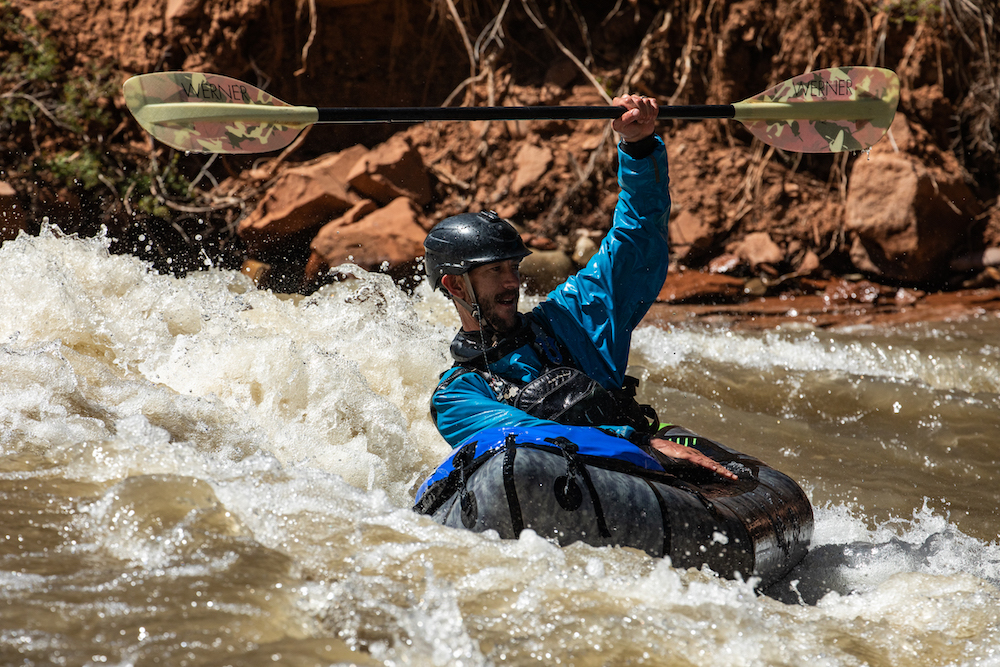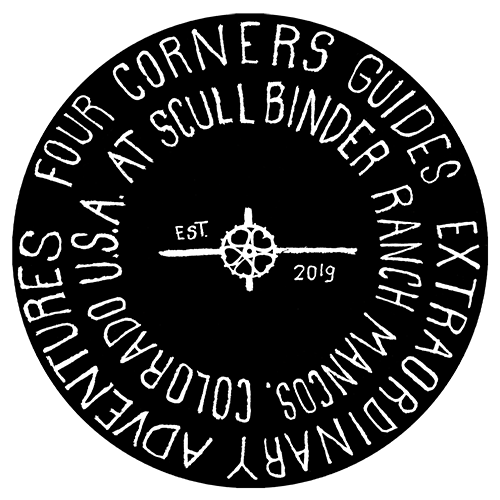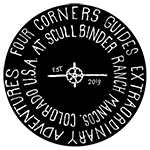a guide to help you figure out which course you should be in
What level packrafter are you? Please answer the questions in each of these sections honestly. As a second skills assessment test, we will also have you fill out a pre-trip registration questionnaire. However, please start here and self identify your skill level to the best of your knowledge. Please note this “scale” applies only to Four Corners Guides courses. Other companies, guides and individuals may have different criteria.
Beginner Courses (B or Level 1)
Please don’t be offended if we decide you should be placed in a beginner course. We all have to start somewhere! 🙏🏼
Please answer these questions (without doing a Google search):
- Have you been river packrafting or whitewater kayaking at least six times in the last few years?
- Do you know how to ferry a packraft or kayak, catch an eddy or do a wet re-entry into your packraft?
- What is the hand signal for, “Are you OK?” and “Yes, I am OK.”
- What does the “defensive” swimming position look like?
If you cannot answer all these with 100% confidence, please sign up for our beginner course!


Beginner/Intermediate Courses (B/I or Level 2)
We recommend this level to people who have some river boating experience in a single-person craft, such as a kayak, packraft, C1 or duckie AND for those who have a basic understanding of rivers. For example, without doing a Google search, answer both the questions in the Beginner section and these:
- What is an eddy?
- Why is it important for me to confidently catch eddies?
- Can you describe 3 important hand signals to ensure safety while on the water?
- What does point positive mean?
Furthermore, by “some experience,” we mean you have navigated a single-person craft at least 6 to 10 times in a river with up to Class I to Class II rapids. This is also an appropriate course for people who have taken our beginner courses, and who have practiced at least a half-dozen times on their own.

Intermediate Courses (I or level 3)
If you are solidly boating up to Class II+ to III on any river, you can self-rescue (i.e. wet re-entry) almost every time, you have boated Class III or IVs (sometimes comfortably and sometimes not) AND you have more than a basic understanding of rivers, we recommend you take an intermediate course. Though not required, most people who take our intermediate courses already have taken a swiftwater rescue course. And all have their own whitewater gear—PFD, whitewater boat, drysuit, whistle, knife, throw bag.
To better ensure correct placement, please answer these questions:
- Is a Class III-rated rapid the same difficulty if the river is at 8,000cfs versus 2000cfs?
- Can you roll your packraft or re-enter your boat after you flip in both flat and moving water? How about mid-rapid?
- Do you know how to surf your packraft?
- How often do you practice catching eddies?
- Why is it important to be able to catch eddies?
If you can answer these nuanced questions confidently without doing a Google Search and you have your own whitewater packraft and equipment and regularly use it, then an intermediate course is probably the right course for you.


Intermediate/Advanced Courses (I/a or level 4)
We recommend you take an Intermediate/Advanced course if:
- You confidently paddle up to Class III+ at both high and low water, and you have done so on 6-10 rivers without significant swims;
- You have taken one or more swiftwater safety courses;
- and you paddle regularly and can confidently answer, “yes,” to all the following questions.
Please don’t look up the answers!
- Can you re-enter your boat after flipping (or roll it) 5 times in two minutes? If unsure, go test yourself.
- Can you explain why each of these hazards–strainers, sweepers, undercuts and low-head dams–are dangerous?
- Can you confidently navigate around any obstacle in Class III rapids? If so, what are some of the techniques you might use?
- Can you confidently catch eddies in Class II-III rapids?
- Do you know how to brace and use bow and sculling draws?
- What are some important components of a proper, powerful forward stroke?
There are nuanced answers to some of these questions. If you’re struggling with some of these questions and answers, consider taking our intermediate course instead.
Swiftwater Rescue Courses
Certification
Packraft-specific certification courses include both classroom and on-the-water swiftwater safety training. We recommend these courses for anyone who enjoys the classroom work, works professionally in whitewater situations, or is or wants to be a packraft guide or instructor.
These courses are run through the Swiftwater Safety Institute, but are specifically for our clientele and run on our permits. You must have your own equipment, and you must at least have some experience in a packraft. This course is not for beginner boaters with zero experience. Please take one of our beginner courses first.
Non-Certification
Non-certification courses are for people who want the full breadth of swiftwater safety skills to enhance their existing skills sets and increase their ability to packraft safety, but who don’t need/want the certification or the heavy, technical classroom work.
Non-certification courses are 100% packraft-specific and on-the-water focused. This course is available to a variety of boaters, from beginners to intermediate boaters (as designated on the specific registration pages for each course). We may or may not provide equipment, depending on the level of the course. And we can tailor a course to an individual or group’s specific needs
Advanced Courses (A or level 5)
For people who solidly paddle Class IV and beyond. We rarely run these courses, as demand is low. If you want to take one, please email us to schedule a private course for you and/or your group with Jeff Creamer.

Expedition Courses
For people who want to learn all the backcountry and navigation skills necessary for backcountry packrafting travel. These courses include a backpacking and a packrafting component. Some are loops adventures whereby you return to the place you started, while others are point-to-point whereby you cover significant and varied terrain. Generally, depending on the level of these courses, you’ll be required to take a pre-requisite one to two training days to hone your packrafting paddling and river navigation skills and so we can assess whether or not you should be on a more advanced course.
MIxed levels
Please note that if you are a more advanced boater, but you want to bring your partner boating. You will be placed in the course appropriate to the least-experienced boater. Or, you may schedule a private course, for which we can better tailor your experience to your collective needs.
THINGS TO CONSIDER
Please keep in mind, if you do not end up in the appropriate level course due to your misjudgment or misrepresentation of your own skills and/or misleading answers to our questionnaire, we have the right, at any time we deem appropriate, to remove you from a course. If we do remove you from a course because we feel you would be a danger to yourself or others, you will not get a refund. Nor will you be able to reschedule your course. Thus, we recommend you take both our recommendations and our questionnaire seriously. Thanks!

